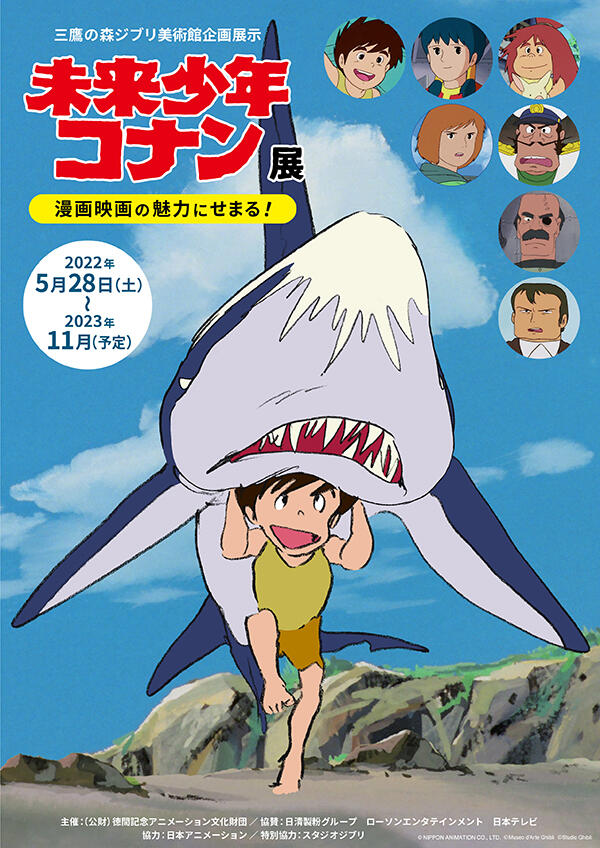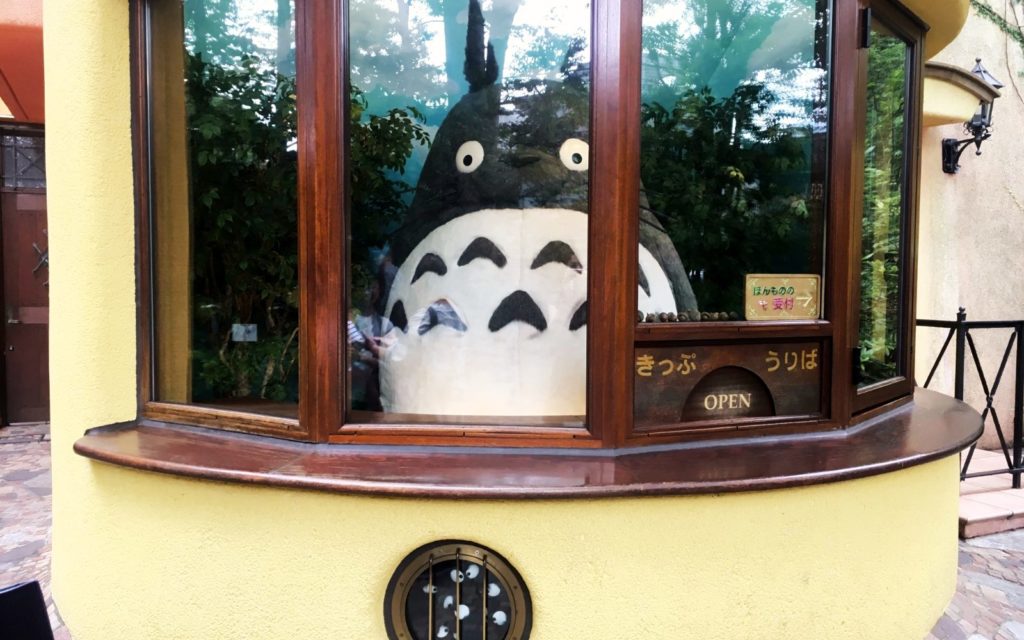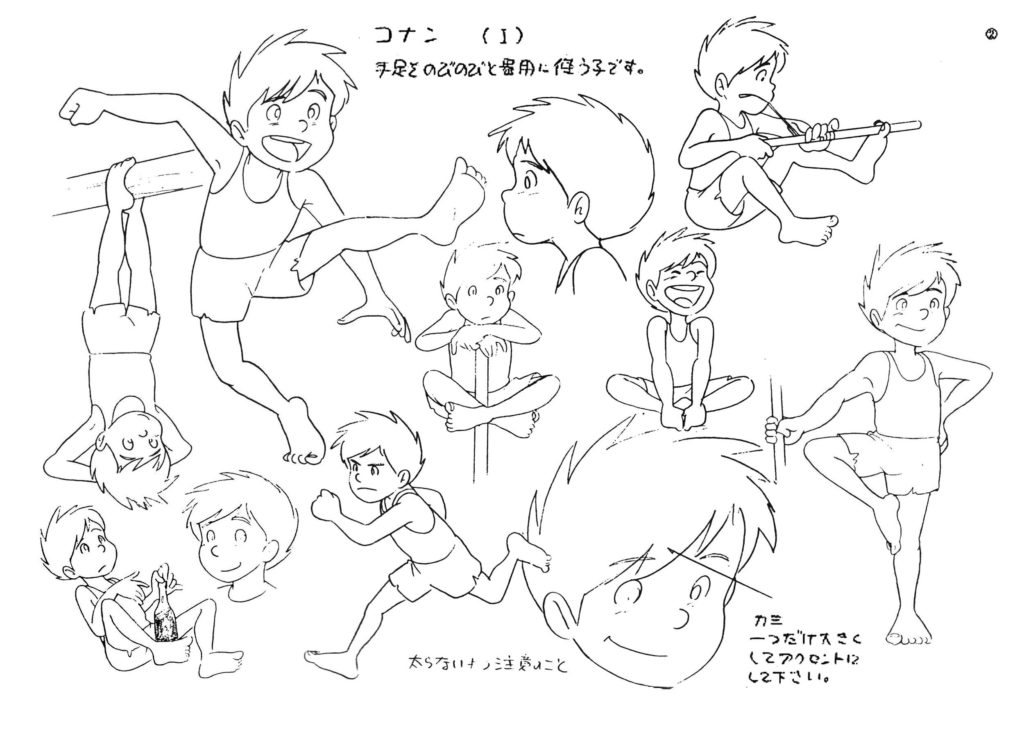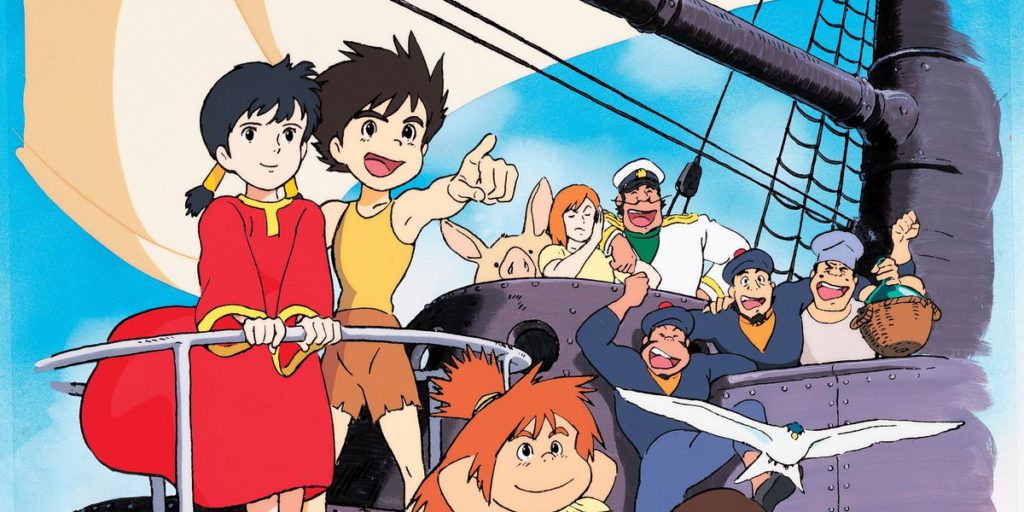Future Boy Conan at the Ghibli Museum
May 17, 2023 · 0 comments
By Andrew Osmond.

For all fans of Ghibli and Hayao Miyazaki, we’d like to remind you that Miyazaki’s first anime, the adventure series Future Boy Conan, is available from Anime Limited in standard and Collector’s formats, the latter in 4K. If you want to know what Conan is like (quick answer; like Laputa), there’s an introductory article on this blog to fill you in.
Like other anime milestones, such as the first Gundam by Conan storyboarder Yoshiyuki Tomino, the show’s first-run ratings weren’t stellar for the time. There’s more about that here. But the show’s recognition grew, and grew, over the decades. Of course, much of that’s down to Miyazaki’s own surging fame. His name was only known to insiders and hardcore fans when Conan first came out. But now people recognise how goodthe series is in its own right. Look at the wonderful tribute at the start of Masaaki Yuasa’s series Keep Your Hands Off Eizouken!, when a young girl comes across Conan (painstakingly recreated by Science Saru) and is hooked on anime for life.
Forty-five years after its debut, Future Boy Conan is now the subject of a temporary exhibit at Tokyo’s Ghibli Museum. Conan is not a Ghibli series – it was made by Nippon Animation, famous for animating family series like Heidi and Anne of Green Gables. But like those shows, Conan is recognised as part of Ghibli’s prehistory, though its themes, characters and worldbuilding.
Aside from the images in this article, you can get an idea of the exhibit from the photos at this link. The exhibit covers two large rooms on the museum’s middle floor, and has two purposes – to show the effort that went into making Conan, and to bring elements from it into 3D life. Naturally the exhibit will mean more to you if you’ve watched the anime first, though it also serves as a preview for people who’ve never seen it. When I visited the exhibit, I heard the museum’s staff explaining the show to guests for whom this “old” Miyazaki work was all-new.

The “3D” elements start with an alarming image of the little-boy hero Conan, proudly carrying the giant shark he’s vanquished, baring its jaws at visitors! It reminded me that the Ghibli museum isn’t averse to giving children a cheerful scare. One of its past exhibitions was a version of the “Goldilocks” story, complete with a looming Father Bear. I was told by Chihiro Tsukue of Ghibli’s publicity that the favoured tactic of Japanese kids was to throw a few punches at the ursine papa, then bid a hasty retreat. I wonder if kids will try it with the shark…?
The exhibit itself has several other lovingly detailed models, including Conan’s island from the start of the series, complete with the crashed rocket, and a cross-section of the Barracuda sailing ship, depicting multiple scenes from the series inside. It reminds you how these imaginary sets and settings were worked out by the artists as 3D spaces, long before CG models took over animation.
There’s also a (possibly) full-sized Robonoid, one of the show’s funny vehicles; it vividly shows how Miyazaki saw mecha very difficult from Tomino or Go Nagai. The “good” and “bad” islands of High Harbour and Industria also get model treatments, though I was disappointed that the Industria one skipped the workers’ undercity, probably inspired by Fritz Lang’s Metropolis.

The exhibit is organised as a chronological journey through Conan’s 26 episodes. The text on the displays is Japanese-only, but when I entered the exhibit, one of the staff saw I was (obviously) a gaijin and gave me a large English-language booklet to flip through (though you can’t keep it when you leave!). This guide outlines the show’s history, what happens in each episode, and includes some other notes – for example, how Conan leant on the average boy’s dream of being kind and protective towards a beautiful girl. No, the text made no links to moe mentality, though Patrick Galbraith has much to say on that connection in his book, Otaku and the Struggle for Imagination in Japan.
The displays feature copious stills and video clips from the series, but Conan fans will most welcome the chance to scrutinise the pre-production art, the sketches of models and places, the image boards, the character model sheets. I didn’t see so many drafts that were intriguingly different from the final show – the kind of thing that makes Ghibli books like this a joy. However, I did spot a couple of pics where Monsley, who’s a mean-seeming Conan character who becomes central to the story, looks much older than she did in the anime. This chimes with a comment by Miyazaki in the book Starting Point, that he felt Conan was short on young (adult) women and rejuvenated Monsley for that reason.

As with the other exhibitions at the Ghibli museum, you feel invited to stand and peruse it at leisure. The museum as a whole strives to feel interactive; some of Conan’s image boards are contained in books that you can pick up and leaf through freely. There’s not much key animation on display, but at the end there’s a frame-by-frame breakdown of one of the last shots in the series. I couldn’t see a credit, but I wouldn’t be surprised if the animation was drawn by Miyazaki himself. And would anyone be surprised by what it shows – a boy lifting a girl joyfully into the air?
As of writing, it’s not confirmed how long the Conan exhibition will run, so you should check the museum site before booking. Remember that tickets for the Ghibli Museum must be booked online in advance; they go on sale on sale on the tenth of each month for the next month. If you look online, it’s claimed that you can snag museum tickets by other routes, but I’ve not tried them myself.
I should add that when I made my own booking this April, through the Lawson website, it was murderously hard and time-consuming to snag a ticket. However, it probably didn’t help that I was booking in the period which included Japan’s Golden Week holiday!
Andrew Osmond is the author of 100 Animated Feature Films. The Future Boy Conan exhibition runs at the Ghibli Museum in Mitaka until “at least” November.
Leave a Reply